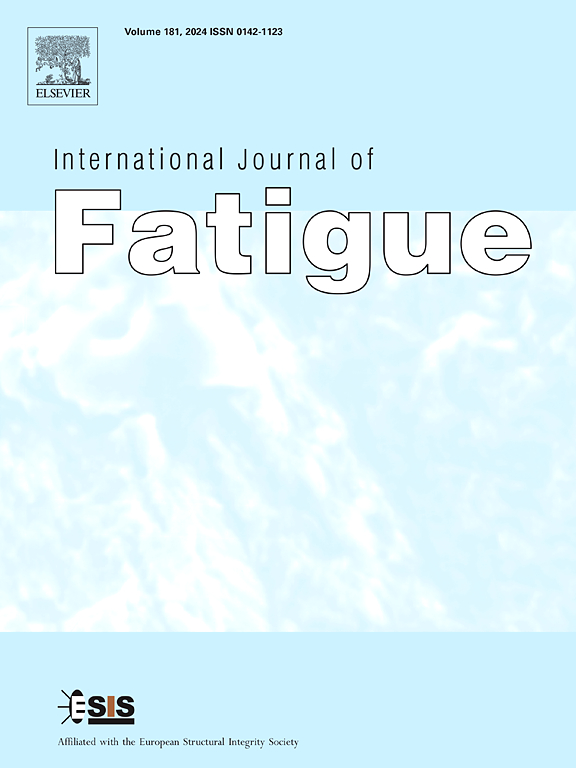铆钉和螺栓在剪切中的疲劳破坏
IF 5.7
2区 材料科学
Q1 ENGINEERING, MECHANICAL
引用次数: 0
摘要
带有热铆钉或紧绷螺栓的双覆盖剪切接头在循环载荷下可能会在层或紧固件中失效。后一种失效模式的测试是稀疏和分散的。本文结合这些数据,试图为这种破坏模式提供一个统一的疲劳驱动力理论。使用有限元方法,我们证明了紧固件的名义剪切应力不是其疲劳性能的良好指标,因为它忽略了摩擦力传递并假设紧固件之间的荷载分担相等。给出了实际剪应力范围的解析模型。我们推导出这个剪切应力范围的S-N曲线,要么使用测试数据的直接回归,要么使用决定性破坏类型(层或紧固件)的贝叶斯推断。最后,我们推导出紧固件失效对层压失效起决定性作用的几何形状和载荷。本文章由计算机程序翻译,如有差异,请以英文原文为准。
Fatigue failure of rivets and bolts in shear
Double-covered shear joints with hot rivets or with snug tight bolts subjected to cyclic load may fail in the ply or in the fastener. Tests with the latter failure mode are sparse and scattered. This paper combines these data and attempts to provide a unified theory on the fatigue driving force for this failure mode. Using the finite element method, we demonstrate that the nominal shear stress in the fastener is not a good indicator of its fatigue performance, because it ignores frictional force transfer and assumes an equal load share between fasteners. We provide an analytical model for the actual shear stress range. We derive S–N curves for this shear stress range, either using straightforward regression of test data or using Bayesian inference of the decisive failure type (ply or fastener). Finally, we derive the geometries and loads for which fastener failure is decisive over ply failure.
求助全文
通过发布文献求助,成功后即可免费获取论文全文。
去求助
来源期刊

International Journal of Fatigue
工程技术-材料科学:综合
CiteScore
10.70
自引率
21.70%
发文量
619
审稿时长
58 days
期刊介绍:
Typical subjects discussed in International Journal of Fatigue address:
Novel fatigue testing and characterization methods (new kinds of fatigue tests, critical evaluation of existing methods, in situ measurement of fatigue degradation, non-contact field measurements)
Multiaxial fatigue and complex loading effects of materials and structures, exploring state-of-the-art concepts in degradation under cyclic loading
Fatigue in the very high cycle regime, including failure mode transitions from surface to subsurface, effects of surface treatment, processing, and loading conditions
Modeling (including degradation processes and related driving forces, multiscale/multi-resolution methods, computational hierarchical and concurrent methods for coupled component and material responses, novel methods for notch root analysis, fracture mechanics, damage mechanics, crack growth kinetics, life prediction and durability, and prediction of stochastic fatigue behavior reflecting microstructure and service conditions)
Models for early stages of fatigue crack formation and growth that explicitly consider microstructure and relevant materials science aspects
Understanding the influence or manufacturing and processing route on fatigue degradation, and embedding this understanding in more predictive schemes for mitigation and design against fatigue
Prognosis and damage state awareness (including sensors, monitoring, methodology, interactive control, accelerated methods, data interpretation)
Applications of technologies associated with fatigue and their implications for structural integrity and reliability. This includes issues related to design, operation and maintenance, i.e., life cycle engineering
Smart materials and structures that can sense and mitigate fatigue degradation
Fatigue of devices and structures at small scales, including effects of process route and surfaces/interfaces.
 求助内容:
求助内容: 应助结果提醒方式:
应助结果提醒方式:


